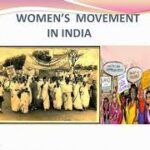Sheen Dwivedi
BegginerResources & Suggestions
Mains Answer Writing Latest Articles
Daily Answer Writing Practice Questions (18 April 2025)
Do you agree with the claim that indecision and risk aversion are prevalent issues in Indian bureaucracy? Support your answer with logical reasoning. (150 words) ऐसा कहा जाता है कि भारतीय नौकरशाही में अनिर्णय और जोखिम से बचने की प्रवृत्ति ...
Strengthening India’s Cyber Defence
Rising Threats Digital Era Challenges: 2024 marks a significant rise in digital threats, particularly from AI and cyberattacks. Key Issues: Disinformation campaigns. Cyber fraud affecting daily life. Current Major Cyber Threats Ransomware Rampage: Over 48,000 instances of WannaCry ransomware detected ...
भारत की साइबर सुरक्षा
बढ़ते खतरे कृत्रिम बुद्धिमत्ता (AI) और साइबर हमले: 2024 में AI और साइबर हमलों के खतरे में वृद्धि। महत्वपूर्ण अवसंरचना पर हमले: डिजिटल हमलों और दुष्प्रचार अभियानों की संभावना बढ़ी है। प्रमुख साइबर खतरें रैनसमवेयर का प्रकोप: 48,000 से अधिक ...

What are the factors that caused Women's movement in India?
The beginning of the women’s movement in India can be traced back to the nineteenth-century social change development. Unlike the Western feminist movement, India’s feminist movement, according to Maitrayee Chaudhuri, was started by males and later joined by women. Feminism as a women-led movement bRead more
The beginning of the women’s movement in India can be traced back to the nineteenth-century social change development. Unlike the Western feminist movement, India’s feminist movement, according to Maitrayee Chaudhuri, was started by males and later joined by women. Feminism as a women-led movement began independently in Maharashtra a few years later, with pioneering advocates for women’s rights and education such as Savitribai Phule, who founded India’s first girls’ school.
During the nineteenth century, a majority of women’s difficulties were brought to light, and changes were implemented. Men were in charge of a lot of the early changes for Indian women. By the late nineteenth century, however, their spouses, sisters, daughters, protegees, and other persons directly touched by campaigns such as those for women’s education had joined them in their efforts. Women acquired increased autonomy in the late twentieth century as a result of the emergence of autonomous women’s own organisations. By the late 1930s and early 1940s, a new narrative about “women’s activism” had emerged.
The period following India’s independence is known as the post-pioneer period. Following independence, India had to deal with a slew of issues. Long stretches of provincial mastery had annihilated our indigenous arts and depleted our natural resources. Industrialization, evolving advancements, ignorance, and a lack of portability all contributed to women’s failure to adapt to the new demand. During this time, social reformists attempted to channel Indian culture by presenting sacred and legal arrangements, shielding the general public and ladies from separation, and providing fairness to all residents regardless of position, doctrine,religion, gender, or race.
See lessWhat are the factors that caused Women's movement in India?
The beginning of the women’s movement in India can be traced back to the nineteenth-century social change development. Unlike the Western feminist movement, India’s feminist movement, according to Maitrayee Chaudhuri, was started by males and later joined by women. Feminism as a women-led movement bRead more
The beginning of the women’s movement in India can be traced back to the nineteenth-century social change development. Unlike the Western feminist movement, India’s feminist movement, according to Maitrayee Chaudhuri, was started by males and later joined by women. Feminism as a women-led movement began independently in Maharashtra a few years later, with pioneering advocates for women’s rights and education such as Savitribai Phule, who founded India’s first girls’ school.
During the nineteenth century, a majority of women’s difficulties were brought to light, and changes were implemented. Men were in charge of a lot of the early changes for Indian women. By the late nineteenth century, however, their spouses, sisters, daughters, protegees, and other persons directly touched by campaigns such as those for women’s education had joined them in their efforts. Women acquired increased autonomy in the late twentieth century as a result of the emergence of autonomous women’s own organisations. By the late 1930s and early 1940s, a new narrative about “women’s activism” had emerged.
The period following India’s independence is known as the post-pioneer period. Following independence, India had to deal with a slew of issues. Long stretches of provincial mastery had annihilated our indigenous arts and depleted our natural resources. Industrialization, evolving advancements, ignorance, and a lack of portability all contributed to women’s failure to adapt to the new demand. During this time, social reformists attempted to channel Indian culture by presenting sacred and legal arrangements, shielding the general public and ladies from separation, and providing fairness to all residents regardless of position, doctrine,religion, gender, or race.
See less